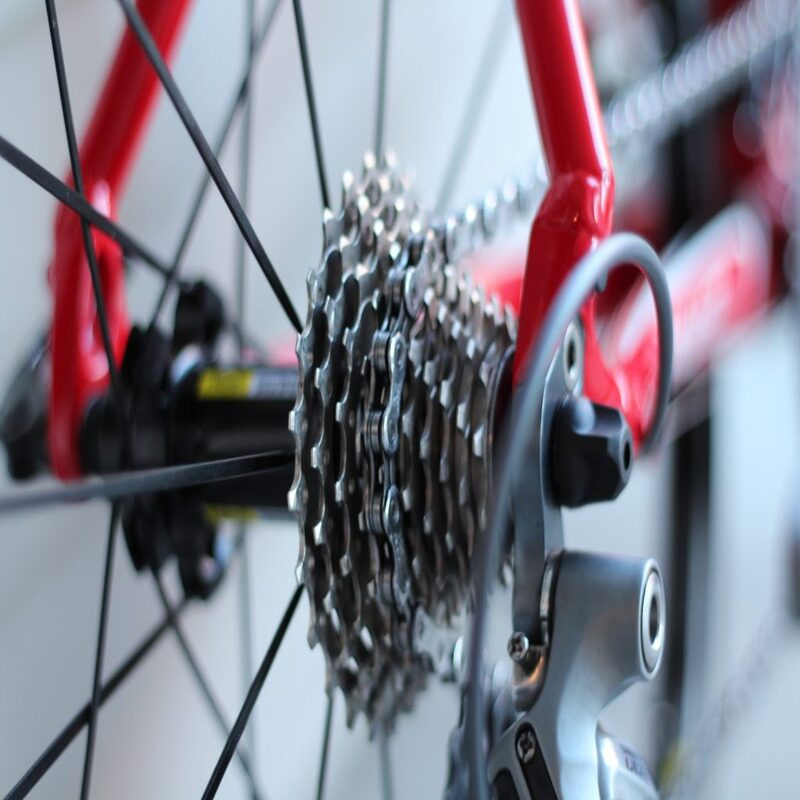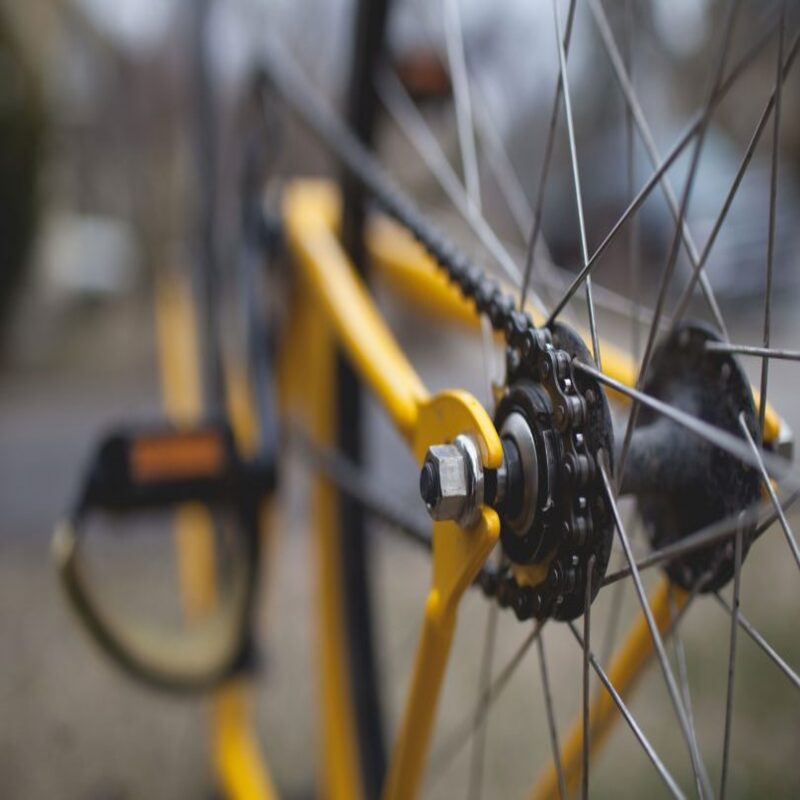Bicycle gears forf dummies can seem confusing at first glance. However, with some knowledge, you can easily understand how they function. Gearing is essential because it allows you to ride efficiently. By adjusting your gears, you can manage various terrains and maintain a comfortable pedaling speed. This article will help demystify bicycle gears for dummies and provide you with the information you need.
What Are Bicycle Gears?
Bicycle gears are systems that allow cyclists to change the mechanical advantage of their pedaling. Essentially, they make it easier or harder to pedal. Gears are typically categorized into two types: derailleurs and internally geared hubs. Derailleurs use a series of cogs and chains, while internally geared hubs keep the gears enclosed within the hub. Each type has its advantages and disadvantages.
The Role of Gears in Cycling
Gears serve multiple purposes. First, they provide options for different terrains. For instance, climbing uphill requires easier gear settings. Conversely, cruising downhill allows you to use harder gears. Second, they enable efficient cycling by allowing you to maintain a comfortable pedaling rate. This is known as your “cadence.”
Understanding Gear Ratios
Gear ratios are crucial to the functioning of bicycle gears for dummies. The ratio indicates how many revolutions the rear wheel makes based on the pedaling revolutions. The ratio is determined by the size of the chainring and the cog. A higher number means a harder gear, while a lower number means an easier gear. Knowing gear ratios can help you make informed choices while cycling.

Different Types of Gears
Different bicycles use various types of gear systems. It’s essential to choose the one that fits your needs best. You have options like traditional derailleurs and modern internally geared hubs. Let’s explore both.
Derailleur Gears
Derailleurs are the most common types of gears found on road and mountain bikes. They consist of a front chainring and a rear cassette. When you shift gears, the derailleur moves the chain from one gear to another. This can create a smooth transition when climbing or descending.
When utilizing derailleur gears, you can manage multiple gearing options effectively. Most bikes have between 18 to 30 gears to choose from. This variety allows for safe navigation through different terrain types, from steep hills to flat roads. However, keep in mind that derailleur systems require regular maintenance.
Internally Geared Hubs
Internally geared hubs are another option, often found in urban bikes. These gears are enclosed, which lowers maintenance needs. While they may have fewer gears (typically three to eight), they offer easy shifting and smoother operation. This simplicity makes them a great option for casual riders.
One primary advantage of internally geared hubs is the ability to shift gears while stopped. This can be helpful when starting from a halt on a hill. However, the weight of hubs can sometimes be an issue. Therefore, consider how you plan to use your bike before making a decision.
How to Shift Gears
Shifting gears can initially feel awkward for new cyclists. However, it’s a skill you can master with practice. Learning the basics of when and how to shift can greatly improve your cycling experience.
When to Shift Gears
Knowing when to shift many factors influences shift timing. First, listen to your body. If you find pedaling too challenging, you may need an easier gear. Similarly, if you are pedaling too quickly without resistance, you might want a harder gear.
Next, consider the terrain. As you approach an incline, shift to an easier gear beforehand. Conversely, when approaching a downhill, switch to a harder gear. By anticipating these changes in terrain, you’ll enjoy a smoother ride.
How to Shift Gears Smoothly
Shifting gears smoothly is all about technique. First, ease your pressure on the pedals when you’re ready to shift. This can help the derailleur or hub adjust without strain. Next, gently engage the shifter to make the change. Finally, resume normal pedaling after shifting.
Practicing this technique consistently will help you shift with ease. Try to practice these movements in a safe area, like a quiet road or park. The more you practice, the more comfortable you’ll become.

Reading Gear Ratios
Understanding how to read gear ratios can be confusing but is essential. Gear ratios are represented as a fraction or a decimal. For instance, a gear ratio of 2:1 means the rear wheel turns twice for each pedal rotation. A higher ratio indicates greater difficulty. A lower ratio indicates easier pedaling. Learning to understand these ratios can help you choose the right gears for different rides. Additionally, consider how your own fitness level interacts with these ratios.
Calculating Gear Ratios
To calculate gear ratios, you need two numbers: the number of teeth on your chainring and the rear sprocket. You can divide the number of teeth on the chainring by that of the sprocket. For example, if your chainring has 50 teeth and your sprocket has 25, your gear ratio is 2:1. Knowing how to do this can empower you to optimize your bike’s performance. By adjusting ratios, you can tailor your bike to your riding style and conditions.
Importance of Gear Ratios
Gear ratios are not just numbers; they influence your cycling experience. A well-chosen gear ratio allows for efficient pedaling. This can significantly impact your speed and energy level. Additionally, it affects how quickly you can change from flat to hilly terrains. Properly adjusted gear ratios make for a smooth riding experience. Therefore, take the time to understand the significance of these ratios.
Understanding Gearing Labels
Gears are often labeled in a specific way that can confuse some cyclists. Familiarizing yourself with these labels can help you feel more at ease. To decode this language, let’s break it down further.
What Are Gear Numbers?
Gear numbers usually represent how many teeth are on your chainring and cassette. For instance, a bike labeled “52/36” means it has a 52-tooth outer chainring and a 36-tooth inner chainring. The rear gear can also be noted, such as “11-32,” which indicates the teeth on the rear gears.
Understanding these numbers helps cyclists determine gear ratios. The larger the chainring or smaller cog, the harder the gear. On the other hand, a smaller chainring or larger cog means an easier gear. By recognizing these numbers, you can make better decisions while cycling.
Recognizing Gear Configuration
Gears can be characterized based on their configurations. A bike could be designated as a “1x,” “2x,” or “3x” system. A “1x” system means it has one chainring in front. It simplifies gear shifting but offers a limited range. A “2x” system has two chainrings and provides more versatility. Finally, a “3x” system offers even more flexibility but may complicate shifting.
Knowing the configuration can impact your cycling experience. If simplicity is key for you, choose a “1x” system. Alternatively, if you often ride varied terrains, a “2x” or “3x” might be more suitable. Always consider your cycling needs before selecting a bike.

Maintenance Tips for Gears
Like any mechanical system, bicycle gears for dummies require maintenance. Regular upkeep can prolong the life of your gears and improve your cycling experience. Here are some helpful tips.
Cleaning Your Gears
Cleaning your gears is essential for smooth operation. Dirt and grime can lead to friction and hinder performance. Periodically clean the chain and sprockets using a degreaser. Wipe them down to remove dirt and apply a light lubricant afterward.
Establish a routine cleaning schedule, especially after rides in muddy or wet conditions. Setting aside time every few months can save you headaches. Regular maintenance keeps things running smoothly and extends the life of your components.
Inspecting for Wear and Tear
Regularly inspect your gear components to ensure they’re functioning well. Check for signs of wear on the chain, cogs, and derailleurs. Look for frayed chain links, which signal replacement is necessary.
Also, examine the alignment of your derailleur. If it’s bent or misaligned, that can cause shifting issues. If you notice any significant damage, consult a professional mechanic. They can guide appropriate repairs. Regular inspections keep you cycling smoothly.
Conclusion
Understanding bicycle gears for dummies may seem daunting, but it is essential for enjoyable riding. By learning how to use and maintain your gears, you’ll maximize your riding efficiency. Focus on the types of gears available and practice shifting techniques.
Moreover, pay attention to gear maintenance for longevity. Recognize gear configurations and numbers to make informed choices when cycling. Ultimately, knowledge is power in cycling. With this new understanding, you’ll feel more confident and prepared. Enjoy the ride!


